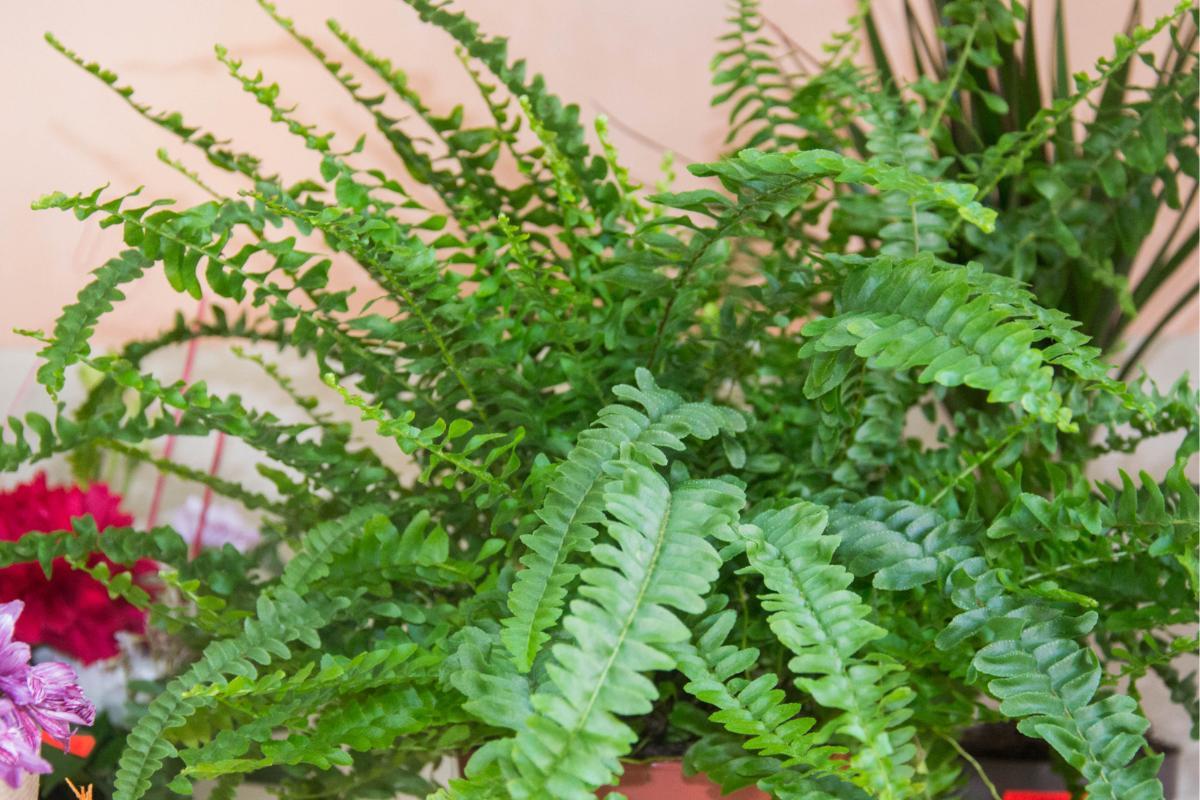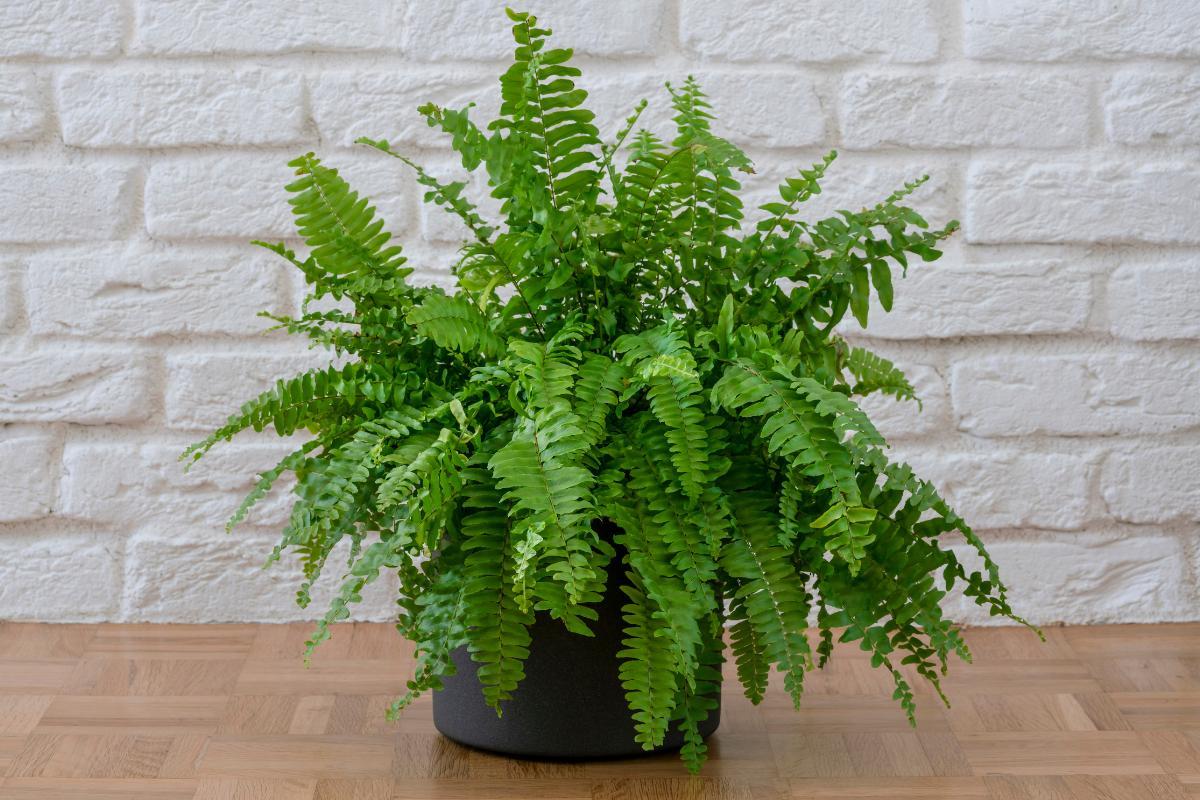Boston Fern Care and Propagation


Although it is also known as a sword fern or fishbone fern, Nephrolepis exaltata is commonly known as the Boston Fern in the US. As a type of fern, it is one of the oldest living organisms which has survived various geological and climactic changes. It was one of the first plants to develop a vascular system, but it has never evolved into flowering. Such an extensive evolutionary history means it is a hardy plant and relatively easy to care for. It requires semi-shade, a nutrient-rich substrate and plenty of water. It reproduces by spores, but the Boston fern can be propagated by division.
At thedailyECO, we discover more by looking at the Boston fern care and propagation. We provide a complete care guide to ensure your Boston fern continues its spectacular survival.
Characteristics of the Boston fern
To better understand how to care for a Boston fern, we should know a little more background. We can do this by sharing the characteristics of the Boston fern:
- The Boston fern is also known as the Boston sword fern, among other names. Its taxonomic name is Nephrolepis exaltata.
- They are a type of fern that purifies the environment and are very easy to care for.
- Boston fern leaves are very long and known as fronds. They are subdivided into different sections and arch downwards to create beautiful curves.
- These leaves have a central axis from which small leaves emerge on both sides, with the larger near the roots and smaller parts at the tip.
- It is dark green in color.

Boston fern light, temperature and location
As with any plant, knowing the environment in which to place it will determine its survival:
- It is sometimes also known as a parlor fern, reflecting that the Boston fern needs semi-shade. This mimics the undergrowth of the forests in which it developed, only receiving light filtered through the canopy of trees above. For this reason, the Boston fern works very well as a houseplant, although it can grow outdoors in the right conditions. This means it cannot stay in direct sunlight.
- The temperature required is between 64.4-77 ºF (18-25 ºC). We must take care that it does not receive direct or strong drafts. It can withstand a sudden temperature drop, but if these occur regularly, it can negatively impact their growth.
- If you are wondering where to put the Boston fern, the best location is a shady corner which only receives indirect light. It can be cool, but it should have a decent humidity.
Boston fern soil and fertilizer
The following needs to be considered when choosing the right soil and fertilizer for the Boston fern:
- It is suggested that the Boston fern substrate be rich in nutrients, while also having good drainage. To achieve this equilibrium in the soil, we should mix one part peat with one part coarse-grained sand. An extra favorable addition is a thick layer of gravel at the bottom of the pot, something which can help with drainage and avoid waterlogging.
- For fertilizer, we must use it only in spring and summer. For the rest of the year, it is not recommended to add any fertilizer. You can dilute some general liquid fertilizer and provide it every fifteen days in small doses during the times it is needed.

Boston fern uses
While the Boston fern is used as a beautiful decorative plant for the home, it is important to know that it is also great in purifying the air. When we keep one or more Boston ferns at home, the quality of the environment inside the home is substantially improved. When the fern performs its photosynthesis function, it absorbs various air pollutants such as carbon dioxide, formaldehyde and benzene. It processes them and returns clean oxygen to us to benefit the environment of our home.
In terms of the type of plant, we should know that the fern is a cryptogam. Learn more with our article on what are cryptogamic plants?
Watering Boston ferns
It is a plant that requires a lot of humidity, so it can be watered every other day. We should do so in small quantities. You can also use a spray to lightly water the leaves. Another good idea is to leave some stones and water in the plant dish that goes under the pot, this way the fern will have a humid environment without becoming waterlogged in the process.

Boston fern pruning
Pruning is only necessary when the leaves darken, as this indicates that they will soon fall off. You can also prune any fronds that are showing leaf holes, because in that case it is very certain that they will not grow again and they are only taking away energy from the plant.
Learn more about the reasons why plant leaves develop black spots.
Boston fern propagation
Here we tell you how to reproduce the Boston fern using the two main types of Boston fern propagation:
- Spores: this type of fern does not reproduce by seeds, but rather does so via a from of asexual reproduction known as sporulation. Ferns have spores, little dark spots that you can see on the inside of the fronds. The spores do not need pollinators like most other plants. Once they have matured, the spores are released by the plant. If they fall in a hospitable environment, new seedlings will be produced that will naturally grow at their own pace. A single Boston fern is capable of producing millions of useful and fertile spores.
- Division: propagation by division consists of manually dividing the plant. You take a fragment of the plant you already have, including its root. It is planted in a new pot, taking care to use the substrate recommendations that we have described above, especially so that the new plant does not run the risk of drowning due to excess water.
Learn more about how fern fronds develop with our article explaining what is a whorl?

Boston fern diseases and pests
As with all plants, there are certain threats to the well-being of a Boston fern. They include:
- Diseases: the Boston fern is often affected by root rot , which occurs when we have watered it excessively. Leaf spots can also appear when the plant has a lot of humidity and little ventilation.
- Pests: among the pests that usually attack Boston ferns, are mealybugs, dust fleas and various types of fungi. All of them are easily extinguished with appropriate chemicals for each case, products that are sold in gardening product stores.
Now you know all about Boston fern care and propagation, you may want to discover some other types of partial-shade plants.
If you want to read similar articles to Boston Fern Care and Propagation, we recommend you visit our Plant care and cultivation category.
- Guillot Ortiz, D. (2012). Spanish ornamental flora: historical aspects and main species. Spain: Jolube.
- Various, A. (2012). 30 purifying plants. Spain: De Vecchi Editions.









